ResourceInfoTable: Difference between revisions
No edit summary |
No edit summary |
||
| Line 5: | Line 5: | ||
|outrotemplate=ResourceTable/Outro | |outrotemplate=ResourceTable/Outro | ||
|link=none | |link=none | ||
|limit= | |limit=100 | ||
}} | }} | ||
Revision as of 12:13, 10 September 2012
| 21st century show and tell | Digital Media | |
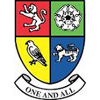
|
A DEFT case study with Dinnington Comprehensive, Rotherham
This cross curricula(i) case study focusses on Digital Literacy, in particular using E-skills(i) to: support skills in writing/recording for a target audience and to improve communication and research skills through the process of creating OER(i)s. The case study illustrates issues involved in the use of video(i) for educational purposes, with an emphasis on students producing and releasing OERs. The method could also be used for self/peer assessment(i) with pupils. One of the lesson ideas from the case study is available as a separate resource at Creating Instructional Videos. |
Teacher Education TE0107 |
| 88 Miles per Hour | Astronomy | |

|
Aiming to win 'A level' recruits with a trip to the strange world of relativity and quantum mechanics The lesson initially looks at time travel, however the overriding theme is that of modelling(ta) and scientific method(ta). It aims to show students that it is acceptable to get a result that doesn't fit with what you expect. It just means you need to change what you expect next time!
|
Science Secondary SC0023 |
| A global dimension to science education in schools | Global education | |

|
Science and technology beyond the Western world This study unit is aimed at teachers who would like to give a more global feeling to their teaching. It shows how to source articles with an emphasis on science and technology beyond the Western world and how to incorporate them into teaching the curriculum.
|
Science Primary Secondary Teacher Education External Resource TE017 |
| Active Engagement | Group work | |

|
Secondary Teacher Education External Resource TE0081 | |
| Alien Life | Astronomy | |

|
Are we alone? This last of six presentations to recruit students for A level physics, is more light-hearted and simpler than the two previous resources. It considers the arguments around whether or not humanity is alone and includes an initial look at the bizarre nature of many of the claims of alien encounters - including a fictional one for good measure - before moving onto the more serious side of alien hunting. It concludes with a probabilistic argument based on the Fermi paradox.
|
Science Secondary SC0024 |
| All in a Jumble | Handling Data | |

|
My measurements have got all jumbled up! Swap them around and see if you can find a combination where every measurement is valid. This lesson idea is about applying and consolidating(ta).
The collection of NRICH activities are designed to develop students capacity to work as a mathematician. Exploring, questioning, working systematically, visualising, conjecturing, explaining, generalising, justifying, proving are all at the heart of mathematical thinking. This particular resource has been adapted from an original NRICH resource. NRICH promotes the learning of mathematics through problem solving. NRICH provides engaging problems, linked to the curriculum, with support for teachers in the classroom. Working on these problems will introduce students to key mathematical process skills. They offer students an opportunity to learn by exploring, noticing structure and discussing their insights, which in turn can lead to conjecturing, explaining, generalising, convincing and proof. The Teachers’ Notes provided focus on the pedagogical implications of teaching a curriculum that aims to provoke mathematical thinking. They assume that teachers will aim to do for students only what they cannot yet do for themselves. As a teacher, consider how this particular lesson idea can provoke mathematical thinking. How can you support students' exploration? How can you support conjecturing, explaining, generalising, convincing and proof?. |
Maths Secondary M0063 |
| Assessment for Learning | Assessment | |

|
Research shows that good practice in assessment for learning can bring about significant gains in pupil attainment Assessment for learning has been defined as the process of interpreting evidence to decide where learners are in their learning, where they need to go and how best to get there. When assessment(ta) for learning is well established in a classroom, pupils are actively involved in their learning; able to judge the success of their work and to take responsibility for their own progress.
For some shorter more focused documents drawn from this DfES document see Giving Oral Feedback, Giving Written Feedback, Sharing Learning Objectives and Outcomes. |
Secondary Teacher Education External Resource TE0082 |
| Using Assessment to Raise Achievement in Maths | Assessment | |

|
Learning goals; self & peer assessment; effecting questioning; marking and case studies This resource explores approaches to assessment(ta) in maths, including the sharing of learning objectives(ta), group work(ta), whole class(ta) assessment, questioning(ta) and more. Four case studies serve as useful discussion prompts to share practice(ta). This .doc version of the QCA's 'Using assessment(ta) to Raise Achievement in Maths' allows schools to select parts of the document that are most relevant to them.
|
Maths Primary Secondary Teacher Education Books External Resource TE0074 |
| Astronomy Master Class | Astronomy | |

|
An overview of of six astronomy-related lessons resources (SC019 to SC0024) The Astronomy Master Class was developed to inspire the next generation of scientists and in particular physicists. Although this course of 6 lessons is framed mostly around the science of astronomy, it draws on many themes from physics and aims to show how they all can link together. Additionally, it is structured so that it deliberately does not cut across material in most standard GCSE science courses and does not aim to answer every question. A deliberate part of the design was to visit each topic area only briefly and leave students hungry for more.
|
Science Secondary SC0018 |
| Blog skills for subject specialists | Blogs | |

|
Secondary Teacher Education External Resource TE0036 | |
| Building bridges from a piece of A4 paper | Force | |

|
A bridge too far... This activity supports a number of learning types:
|
Science Primary SC0048 |
| Celestial Wanderers | Geology, Solar system, History, Astronomy | |

|
Why would we fly to another planet to study its rocks? Drawing on a rich range of sources, this presentation allows the teacher to introduce planetary geology(topic), something not normally studied until degree level. It uses the narrative(ta) of the Voyager Probes journey to illustrate the vastness of the solar system(topic) and also the challenges of designing a spacecraft to travel that far. It ends with a discussion of the history(topic) of Mars, and how the differences between it and the Earth resulted in Mars loosing its water and atmosphere whereas we have kept ours.
|
Science Secondary SC0021 |
| Changes in Science education | Science Education, Science curriculum, Curriculum planning | |

|
Get down to the core of why we teach science Providing an overview of current issues in UK science education, this unit examines what type of science the curriculum should cover and for what purpose. It introduces students to practical problems in the delivery of an effective science curriculum(topic), and particular questions at all three educational tiers - primary, secondary and tertiary - are touched on. The unit can be used to assist curriculum planning(topic)
|
Teacher Education External Resource TE013 |
| Changing KS3 Questions for Engaging Assessment | Assessment | |
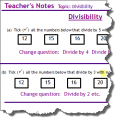
|
A large set of questions grouped by topic, paper, and national curriculum level Test questions are often seen as uninteresting and useful only to assess pupils summatively. This resource however allows questioning(ta) to be used to support pupils’ revision, creativity and higher order(ta) problem-solving in class. The tasks could be conducted via whole class(ta) discussion(ta) or assessment(ta), perhaps using mini-whiteboards(tool), or in small group work(ta) situations.
|
Maths Secondary Teacher Education M0023 |
| Circles, frustums and cylinders revision | Area | |

|
Measure the volumes of objects This resource offer students the opportunity to engage in active learning(ta) - measuring and calculating using large size cylinders and frustums. This lesson brings great opportunity for small group "dialogic teaching(ta)". Open-ended and closed questioning(ta) of students can be used to draw on their existing knowledge and extend their understanding. The teacher provides a practical commentary below.
|
Maths Secondary M007 |
| Classifying and organising living things using images | Living things, Using images | |
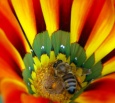
|
Find different ways to classify living things This lesson offers opportunities to explore ways to classify living things as well as characteristics which might be relevant, and how to address difficulties that may arise when trying to classify things in this way. The activity may be enhanced by the use of ICT(i) software (e.g. Picasa) but could be carried out with paper-based resources.
This lesson presents a good opportunity for small group work(ta) and some inquiry(ta) into how we classify; and why some classification methods might be more useful, or more scientifically interesting than others. There is also a good opportunity to use different sorts of questioning(ta); to encourage pupils to question each other; to engage in peer assessment(ta) and to focus discussion(ta) on the scientific method(ta) using key vocabulary(ta). |
Science Primary SC008 |
| Cloning | Ethics, Cloning, Genetics | |

|
Cloning - Potential and Issues The topic of the ethics(topic) of modern biology needs to draw on a wider range of sources than a printed book may provide. This resource uses a web tutorial interspersed with external links to news and comment. Rather than leave the students to explore too many interests, a worksheet with questions enables the teacher to focus the students on a subset of the material. You can adapt this to your particular need, for example, if you wanted students to have a discussion(ta)in small groups. You might also consider using a blog, chat room or other ICT tools to record the questioning(ta) and reasoning(ta) around this topic. The lesson-planning proforma (or draft lesson plan) includes a list of objectives that shows the scope of the material.
|
Science Secondary SC0014 |
| Collaborative Writing | ||
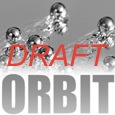
|
Science Maths Draft | |
| Comets and Meteors | Astronomy | |

|
When a comet approaches the sun its tail is behind it. When it is moving away from the sun the tail is in front. Go figure. Or read more. The lesson model is that of active note-making. Students must not take notes from the board but instead must use their creativity to develop their own notes. They are encouraged to use colour, image, symbols, humour and metaphor to lead them through a richer learning experience. Students need help in achieving this but soon catch onto the idea. They become more independent with taking notes and more attentive to the subject at hand.
|
Science Secondary Draft SC0031 |
| Common Pitfalls in Questioning | CPD | |

|
Exploring problematic questions and ways to avoid them Questioning(ta) is a key classroom practice, and skill, and can sometimes fall into the trap of focusing on lower levels, as opposed to higher order(ta) reasoning(ta) and discussion(ta) skills. This resource covers some reasons why this - and other pitfalls - occur, with some practical advice for ensuring high quality questioning in your classroom.
|
Secondary Teacher Education External Resource TE0094 |
| Consecutive Sums | Investigation | |

|
Can all numbers be made in this way? For example 9=2+3+4, 11=5+6, 12=3+4+5, 20=2+3+4+5+6 By definition, a problem is something that you do not immediately know how to solve, so learning how to solve something unfamiliar is not straightforward. Tackling an extended problem is difficult.
This lesson gives pupils an opportunity to engage in mathematical thinking(ta) and develop their higher order(ta) thinking skills on a problem that is accessible but which has interest. For example, the problem is presented in diagrammatic and numerical ways. The plan suggests several visualisation(ta) methods to present the same underlying task. It should be useful for teachers to compare these different presentations and either to select the one that they feel will be most useful for their pupils or explore ways for the pupils to see the links between the different methods. The assessment(ta) ideas, using other pupils' solutions from the NRICH website are widely applicable to other problems too. |
Maths Secondary M001 |
| Copyright: keep it legal | E-skills, Copyright | |

|
Primary Secondary Teacher Education External Resource TE0042 | |
| Creating Digital Painting using iPads | Digital Art, E-skills | |

|
Children using iPads to create observational drawings of flowers This activity is a cross-curricular(subject) activity, that gives children to opportunity to work independently on an art activity that also encourages the development of E-skills(topic). This activity encouraged inclusion(ta) as the children's final work was displayed as a collaborative(tool) piece, where all children had the opportunity to make an equal contribution.
In this instance, the children created observational drawings of flowers. However, the subject of the art could change to fit with any topic across the curriculum. The use of hand-held technology could also active learning(ta) as the portability of the iPads and iPods would allow them to be used outside the classroom, thus enabling observational drawings to be made in a range of locations. |
Primary TE0125 |
| Creating Instructional Videos | E-safety, ICT, E-skills | |

|
Children create instructional videos to upload to YouTube This activity is a cross-curricular(subject) activity with a literacy focus, involving a collaborative(tool) approach, giving children to opportunity to work together to produce a set of instructional resources. Children were encouraged to engage in group talk(ta) and discussion(ta) in the classroom to reflect on what they should include in their videos. The activity furthers e-skills(topic) through the use of whole class(ta) participation. It develops e-safety(topic) skills through discussion of the issues relating to posting digital content online. Children were allowed to choose their own subject for the video, although this could be set by a teacher with a specific outcome in mind, or could be tailored to cover a particular topic or subject. It could, for instance, be used to explain their mathematical thinking(ta).
|
Secondary TE0124 |
| Creating and Using OER to Promote Best Practice | Curriculum development, Curriculum planning, Blogs, ICT | |

|
One school's approach to sharing and promoting best practice using a blog This lesson idea encourages collaboration(ta) between teachers in order to develop and share practice(i) across a school. Blogs provide excellent opportunities for children and adults to share ideas and work together. They encourage and enable dialogue(ta) between a writer - or group of writers - and an audience, allowing for quick and easy feedback. They enable questions(ta) to be asked and answered quickly. This example shows a blog being used to encourage discussion(ta) to enable curriculum planning(topic) and curriculum development(topic).
|
Teacher Education TE0127 |
| Creativity and ICT | ICT | |

|
Building communities and exploring creativity This unit engages with the debates surrounding the term ‘creativity(tool)' and explores ways in which ICT(i) creates new opportunities for creativity and collaboration(ta)
|
Teacher Education External Resource TE016 |
| Cubic Equations and Their Roots | Statistics | |

|
To interactiviley explore and understand complex mathematics with GeoGebra This lesson features a ‘real life’ example for students to explore using visualisation(ta) via GeoGebra. The focus on ‘real life’ increases student motivation.
The activity engages pupils in group talk(ta), mathematical thinking(ta) and vocabulary(ta). This open ended(ta) task encourages higher order(ta) thinking, and encourages whole class(ta) discussion(ta)/questioning(ta) and inquiry(ta) projects. |
Maths Secondary M0031 |
| How DNA is sequenced: the stages | Genetics | |

|
The complexity and scale of genome sequencing Students match diagrams of the stages of DNA sequencing with a list of text descriptions of the process. The lesson can involve students discussing in pairs / group work(ta), followed by a teacher or student-led plenary. Students would share ideas, come to a consensus and check the ‘whole class(ta) response’ with their version. The teacher's questioning(ta) can focus on scientific method(ta) and use of scientific language(ta). The lesson idea provides opportunities for the effective use of assessment(ta).
|
Science Secondary External Resource SC0016 |
| Data Logging and Control | ICT | |

|
A compendium with numerous ideas for using sensors to teach science. This book provides a set of resources and lesson ideas with ICT(i) as a key focus for use in inquiry(ta) based learning and the scientific method(ta). It offers opportunities for use of group work(ta) and collaboration(ta) as well as whole class(ta) questioning(ta).
|
Science Secondary Books SC0052 |
| Data Logging inservice booklet | ICT | |

|
A compendium of CPD and ITE activities on why we use sensors and the practicalities of implementing their use Activities and advice for using ICT(i) for use in inquiry(i) based learning and the scientific method(i).
|
Science Secondary Books SC0060 |
| Designer Babies | Ethics, Fertility treatments | |
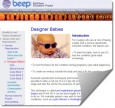
|
When does life actually begin? By using an informative web tutorial, this resource aims to stimulate discussion(ta) on the ethics(topic) of modern biology. A worksheet asks students where they stand and reassures them that their response might be kept private. You might also consider using a blog, chat room or other ICT tool to record the questioning(ta) and reasoning(ta) around this topic. A teaching section offers guidance on 'teaching argument' using 'Toulmin’s model of argument' and 'The IDEAS project'.
|
Science Secondary SC0015 |
| Developing Effective Learning | Study skills, Effective Learning | |

|
A unit exploring 'effective learning' in the classroom This document takes a longer look at effective learning, study skills(topic), and the attributes of effective learners.
|
Secondary Teacher Education External Resource TE0085 |
| Developing Good Explanations | CPD | |

|
Say that again? Developing good explanations for classroom teaching This resource explores some characteristics of good explanations (including linking to questioning(ta)), explaining these thoroughly and linking them to pupils' ability to engage in active learning(ta)
|
Secondary Teacher Education External Resource TE0097 |
| Developing Language in Primary Science | Literacy, Curriculum development | |

|
Language development and the use of appropriate vocabulary(ta) is highlighted as important across the curriculum. Incorporating this consideration into science planning(ta) is important for meeting the target of developing language. The importance of language and talk in science – including through group work(ta), and Whole class(ta) dialogue – is highlighted elsewhere (and in the resource) but includes the ability to explain concepts, understand synthesising ideas (including those from other people and texts), and the need to read and write for different purposes, (including conceptual understanding, data presentation, etc). These are key ideas in communicating the scientific method(ta) |
Science Primary Teacher Education TE052 |
| Developing Progression in Primary Science | Progression, Curriculum development | |

|
Progression and the wonders of 'one-ness' and 'two-ness' A first part on ‘developing progression in science investigations’ could be used to prompt discussion on how far we expect pupils to develop, and the sorts of inquiry(ta) which encourage this.
The second part, 'indicators of Level 1 and 2ness', provides a useful set of criteria for assessing national curriculum levels. These criteria prompt thinking about assessment(ta) levels in curriculum development(topic). A concrete outcome of the activity may be to keep such criteria in a mark book for day-to-day use. |
Science Primary Teacher Education TE0049 |
| Developing Reading | Reading skills | |

|
Secondary Teacher Education External Resource TE0083 | |
| Developing Writing | Writing | |

|
Understanding the importance of writing This resource is a larger DfES document on writing(topic) and language(ta) development, from which more focused resources (including Establishing Purpose for Writing) are drawn.
|
Secondary Teacher Education External Resource TE0084 |
| Diagnostic Questions in Maths Teaching | Assessment | |

|
Using questions to probe what pupils do, and do not, understand These questions provide a useful starting point from which to think about the use of diagnostic questions(ta) for assessment(ta) for learning and whole class(ta) dialogic teaching(ta). They may be useful for teachers in their own right as sample questions, or to think about the best way to deliver feedback, use ICT tools effectively, and support learners through assessment. In this context the questions should be considered with a critical eye. Teachers might like to think about:
Teachers might take this as an opportunity to engage in sharing practice(ta) to think about how to use such questions in the classroom - perhaps using mini-whiteboards(tool) or ICT tools - and outside of them, perhaps using quiz(tool) or voting(tool) software. |
Maths Secondary Teacher Education M0064 |
| Differentiation | Differentiation, Curriculum planning | |

|
Developing effective techniques for differentiation by task and outcome The small group work(ta) nature of this task allows teachers to share ideas, and attempt to conceptualise two different types of differentiation(ta), together. It also encourages teachers to share practice(i)s in differentiation. Teachers are first asked to consider differentiation ‘by task’ by thinking about self-sustaining activities which pupils could manage with little support. They are also asked to consider differentiation by outcome, and ‘hierarchies of achievement’ for particular topics. The practical nature of the task offers a concrete outcome for teachers to take away and use in their practice both day to day, and in curriculum planning(topic). The resource could be used as a prompt to start teachers off, a comparator for teachers working on similar topics, or just as an additional set of possibilities.
|
Science Primary Teacher Education TE0047 |
| Digital Reporters at Camp Cardboard | E-safety, Blogs, E-skills | |
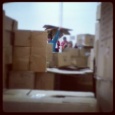
|
Children using iPads to blog about Cardboard Sculptures This activity is a cross curricula(subject) activity, involving a collaborative(tool) approach, giving children the opportunity to work together on a blog. Children were encouraged to engage in group talk(ta) and discussion(ta) in the classroom to reflect on the activity they were to report on. The activity furthers e-skills(topic) and e-safety(topic) through the use of whole class(ta) participation. The specific art activity provided a great stimulus for the blogging. Equally, however, this approach could be applied to any event in or out of school. The use of blogging and social media gave the opportunity for children to share their ideas with a wider audience, and also gave opportunities for real-time feedback to their work. The use of hand-held technology also enabled active learning(ta) as the portability of the iPads and iPods allowed them to be used outside the classroom.
|
Science Primary SC0055 |
| Digital Video in ITE | E-safety, Video, E-skills | |

|
Student teachers producing digital media This activity is a cross-curricular(subject) activity, involving a collaborative(tool) approach, giving student teachers the opportunity to work together whilst making digital media in the form of films. The activity furthers e-skills(topic) and also helps to develop discussion relating to e-safety(topic). The topic of location provided the stimulus for the videos. Equally, however, this approach could be applied to any topic or subject in school. The use of video also encouraged active learning(ta), with the students developing their own skills through direct participation in the creation process.
|
TE0134 |
| Discussion in Science Teaching | Discussion | |

|
Equip yourself to run a discussion in class This resource is aimed at developing student teachers’ skills in working with discussion(ta). It can be presented to them as a hand-out to accompany an activity or read as reference material. See it online at BEEP website. Although it uses a science context, the real focus of the resource is managing and organising discussion-based activities. It provides guidance on:
|
Science Secondary TE0057 |
| e-safety for Key stage 1 | E-safety | |

|
See below for the full pedagogic rationale. |
Primary Teacher Education TE0053 |
| Effective Use of ICT | Using ICT in Science Teaching | |

|
A resource for lecturers to introduce their PGCE students to effective use of ICT A presentation introduces student teachers briefly to the history of school ICT(i) provision and engages them in more detail with ways ICT has been used effectively in supporting science teaching and learning as they engage in small group work(ta) to evaluate material.
|
Science Teacher Education Effective Use of ICT |
| Encouraging Pupils to Ask Effective Questions | CPD | |

|
Getting pupils to do the questioning This resource describes some methods to encourage pupils themselves to engage in effective questioning(ta) - an active learning(ta) approach which may be useful in whole class(ta) or group work(ta) discussion(ta).
|
Secondary Teacher Education External Resource TE0093 |
| Enhancing pupil-learning on museum visits | Museums | |
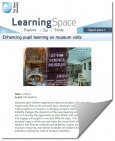
|
How taking pupils to a museum, or bringing museum artefacts into school, changes the dynamics of the learning environment. This unit explores practical ways in which you can make the most of UK's extraordinarily dynamic and diverse museums(tool) and galleries. It gives you pathways into museum resources and shares examples of teachers and museum educators making the most of museum artefacts.
|
Science Secondary Teacher Education External Resource TE006 |
| Establishing Purpose for Writing | CPD | |

|
Why do we have to write it down? Thinking about why we write... This resource highlights some key types of text, and asks teachers to think about the key texts and language(ta) in their own subjects, and how tasks can be well designed to illicit purposeful writing in their classroom practice. Teachers should consider learning objectives(ta) for purposeful writing.
|
Secondary Teacher Education External Resource TE0109 |
| Ethical issues in human reproduction | Ethics, Human reproduction | |
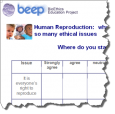
|
Why does reproduction raises so many ethical issues? When does life begin? This lesson outline stimulates A-level students to engage in discussion(ta), develop their reasoning(ta) skills and increase their awareness of the bioethical(topic) issues involved in human reproduction.
Background texts and open-ended questioning(ta) about human reproduction, contraception and IVF are provided as the stimulus. Small group discussion about these topics, writing on post-it notes, and reading case studies aim to get students reasoning(ta) to justify their opinions, and to compare and evaluate competing views. Finally, whole class(ta) discussion synthesises the emerging ideas and encourages students to consider changing their positions or adding additional issues to a recording table. |
Science Secondary SC0013 |
| Explaining | Explaining | |

|
How's that work? Thinking about explanation This is a longer DfES resource discussing explanation, from which the shorter and more focused resources Developing Good Explanations, Purposes of Explanations are drawn.
|
Secondary Teacher Education External Resource TE0079 |
| Exploring Fibonacci sequences | Sequences | |

|
Maths Secondary Coming soon | |
| Measuring Light - Light and Dark | Measuring | |

|
Light can be light, dark or somewhere in between This lesson involves the use of higher order questioning(ta) on scientific method(ta) topics to engage pupils in an inquiry(ta) relating to the nature of light, its measurement, and the use of sensors.
|
Science Primary SC0028 |
| Exploring Pattern | Study skills, Patterns | |

|
Exploring patterns in mathematics Each chapter of this tutorial highlights the study skills(topic) required to work through the real world examples and activities given. There are problems to be solved, some of which involve higher order(ta) thinking skills (for example, being asked to correct a set of instructions), and all of which encourage the use of mathematical language(ta) and mathematical thinking(ta). The resource could also be used in class, or as a useful homework(ta) pack.
|
Science Maths Primary Teacher Education External Resource TE004 |
| Exploring shape properties using simple Origami folds | Shape | |

|
Maths Secondary Coming soon M0015 | |
| Exploring the intersections of digital literacy and creativity | Creativity, E-skills | |

|
A DEFT case study with Mundella Primary School, Sheffield This cross curricula(i) case study focusses on Digital Literacy, in particular using E-skills(topic) to: extend/update teaching skills and support CPD and explore the creative potential of digital technologies. The case study examines the potential of using mobile technologies to enhance creative aspects of learning.
One of the lesson ideas from the case study is available as a separate resource at Creating Digital Paintings using iPads |
Primary Teacher Education TE0110 |
| What floats and what sinks | Force | |

|
Is getting in the bath a way to lose weight? This activity supports a number of learning types:
|
Science Primary SC0044 |
| Force | Force | |

|
Thinking about 'force' in the national curriculum This sessions engaged pupils in inquiry(ta) using the scientific method(ta) to explore force. It offers opportunity for teachers to use higher order questioning(ta), whole class assessment(ta) and to engage pupils in effective group work(ta) for investigation.
|
Science Primary Teacher Education External Resource TE011 |
| Force in the early years | Force | |

|
Thinking about the language of force This lesson idea highlights the scientific language(ta) around the topic of force, and through group work(ta) and whole class(ta) dialogue(ta) engages pupils in inquiry(ta) and the scientific method(ta) surrounding force.
|
Science Primary External Resource TE009 |
| Geography in Education | Geography in Education | |

|
Where is it? Exploring the place of geography in the curriculum This unit looks at the contribution that geography can make in the education of young people and the characteristics and purpose of geography as a subject.
|
Teacher Education External Resource TE0015 |
| Getting Your Formulae in Shape | Shape | |

|
Solving a card sort for perimeter, volume and area formulae This resource provides an opportunity for some revision of shape formulae - perimeter, area, and volume. It encourages pupils to engage in effectivereasoning(ta), and group talk(ta), and could be used as an effective assessment(ta) tool. The task could be differentiated(ta), or extended for a whole class by cutting the 'formulae' lines off the bottom of each hexagon, and asking students to match these to the shapes, prior to matching the shapes to the formulae type.
|
Maths Secondary M0065 |
| Getting a buzz out of blogging | Blogs, E-skills, Copyright | |

|
Primary Secondary Teacher Education External Resource TE0025 | |
| Giving Oral Feedback | CPD | |

|
Developing good practice in giving oral feedback This resource discusses giving oral feedback, particularly in the context of assessment(ta), which could include whole class(ta) discussion(ta) or group talk(ta), as well as questioning(ta) contexts.
|
Secondary Teacher Education External Resource TE0104 |
| Giving Written Feedback | CPD | |

|
Effective methods for written feedback This resource discusses written feedback in the context of assessment(ta) and giving clear learning objectives(ta) from any feedback given. While such feedback is often on homework(ta), the resource is intended more broadly than that.
|
Secondary Teacher Education External Resource TE0105 |
| Group Work | Group work | |

|
A unit exploring Group Work in context This resource is a longer document on group work(ta) from which a number of other more focused resources have been drawn (including Group Work - Choosing and Selecting Groups, Group Work - Group Size, Group Work - Maintaining Momentum).
|
Secondary Teacher Education External Resource TE0080 |
| Choosing and Selecting Groups | CPD | |

|
What group am I in? Thinking about choosing and selecting groups This resource discusses various options for choosing groupings for group work(ta) activities, and their benefits and limitations.
|
Secondary Teacher Education External Resource TE0098 |
| Group Work - Group Size | CPD | |

|
What size group are we in today? Thinking about group size This resource discusses group work(ta) sizes, and the practical benefits and limitations of various group sizes - from individual work to whole class(ta) work.
|
Secondary Teacher Education External Resource TE0099 |
| Group Work - Maintaining Momentum | CPD | |

|
Keep going! Maintaining momentum in group work activities This resource discusses some practical classroom management(ta) strategies for maintaining momentum in group work(ta) activities.
|
Secondary Teacher Education External Resource TE0100 |
| Guide to the DfES Resource | CPD | |

|
Pedagogy and Practice: Teaching and Learning in Secondary Schools: Leadership guide This resource provides a general overview of the DfES Pedagogy resources (see related resources/below).
|
Secondary Teacher Education External Resource TE0087 |
| Heating and Cooling Materials | Materials | |

|
What happens when you heat and cool materials. In this inquiry(ta)-based lesson plan, students devise a ‘fair way’ to compare (mostly) physical changes in materials such as cheese and chocolate. They ask and answer questions about how to heat the materials and about using materials of the same size and shape. They also predict how substances may change and observe what actually happens.
The purpose of the lesson is to both support Year 2 students work on changing materials and to develop their ideas about ‘fair tests’. The activity thus offers an opportunity to assess(ta) how well students plan a test and observe change. |
Science Primary SC005 |
| Human Genome Project: from Sequencing to Sharing Genomic Information | Ethics, Genetics | |

|
Discuss and share economic, political and ethical issues. This resource provides guidance on how to use whole class(ta) discussion(ta) and/or small group work(ta) to engage students with the science and the economic, political, ethical(topic), legal and social issues of a scientific project such as the HGP. Its focus is on the scientific method(ta); language(ta) and the nature of scientific inquiry(ta).
|
Science Secondary External Resource SC0017 |
| ICT support in education (practitioner) | ICT | |

|
Primary Secondary Teacher Education External Resource TE0045 | |
| IT in Primary Science | ICT | |

|
A whole book of ideas for using generic ICT tools in science This book is a compendium of lesson ideas with ICT(i) as a key focus for use in inquiry(ta) based learning and the scientific method(ta). It offers opportunities for use of group work(ta) and collaboration(ta) as well as whole class(ta) questioning(ta).
|
Science Primary Books SC0053 |
| IT in Secondary Science | ICT | |

|
A whole book of ideas for using generic ICT tools in science This book provides resources and lesson ideas with ICT(i) as a key focus for use in inquiry(ta) based learning and the scientific method(ta). It offers opportunities for use of group work(ta) and collaboration(ta) as well as whole class(ta) questioning(ta).
|
Science Secondary Books SC0054 |
| Inclusion | Inclusion | |

|
Thinking about inclusion in your classroom This resource provides a longer look at inclusion(ta), the resource Planning for Inclusion is a more focused document looking at inclusion(ta) in the context of interactive pedagogy.
|
Secondary Teacher Education External Resource TE0077 |
| Infant and Primary Science Activities with Sensors | ICT | |

|
A compendium of investigations with sensors in primary science. This is a compendium of activities to engage pupils in inquiry(ta) based learning in the scientific method(ta), often making effective use of ICT(i) and sensors(tool). The activities involve whole class(ta) questioning(ta) and collaborative(ta) group work(ta).
|
Science Primary Books SC0057 |
| Interactive exploration of line and rotational symmetry | Symmetry | |

|
Maths Secondary Coming soon M0014 | |
| Introduction to prisms in the context of architecture | Prisms | |

|
Maths Secondary Coming soon M006 | |
| Introduction to games | Games | |

|
Primary Secondary Teacher Education External Resource TE0028 | |
| An Introduction to the Standard Index Form | Standard Index Form | |
Working out the rules according to which a calculator displays large numbers The Standard Index Form is a key idea for mathematicians and scientists. The notion that we choose to write numbers in this way requires some explanation. So in this activity, pupils take part in an investigation(ta) on how standard index form works. This is a higher order(ta) problem solving context where students are encouraged to engage in mathematical thinking(ta). They may be involved in whole class(ta) or small group work(ta) discussion(ta), so they have a good opportunity to practice using mathematical language(ta) and questioning(ta).
This means that students do not need to be able to explain their ideas in full: they can use the calculator's feedback to discover whether their ideas are correct or not. This is also an exciting way for pupils to realise an initial idea that fits the data may need to be extended when new data arises. This resource therefore aims to develop investigative skills, as well as introduce pupils to standard index form in a memorable way. The pupils can later use their knowledge of indices in discussion(ta) and group talk(ta) as they explain what is happening. |
Maths Secondary M002 | |
| It's full of stars | Astronomy | |

|
Using a telescope and considering how those early astronomers may have worked Astronomy(topic) has been practiced for centuries and doesn't require expensive equipment! This first session aims to train the whole class(ta) to use a telescope and, hopefully, to provide an opportunity to engage in some active learning(ta). The lesson includes some naked-eye observations and describes how modern technology helps scientists know where to look. You can explore the scientific method(ta) and language(ta) at this point, using targeted questioning(ta)/differentiation(ta). Students may be able to engage in an inquiry(ta)-based project around this work, perhaps for homework(ta).
|
Science Secondary SC0019 |
| Learning platforms all aboard | E-safety, Sharing practice, Curriculum development, Virtual Learning Environment, E-skills | |

|
It covers some key considerations including and various pedagogic benefits of VLE use, including increased collaboration(ta) and group work(ta) as well as some nice methods of assessment(ta) and differentiation(ta). |
Secondary Teacher Education External Resource TE037 |
| Learning together developing wikis | E-safety, Sharing practice, Wikis, E-skills | |

|
Secondary Teacher Education External Resource TE0035 | |
| Learning together introducing wikis | Wikis | |

|
Secondary Teacher Education External Resource TE0038 | |
| Listening to scientists - an environmental scientist talks about heat loss from houses | Science | |

|
How does a house lose heat? What are the ways to stop this loss of heat? This ten-minute recording was made for a local radio show with a strap line that 'science has a use after school'. Audio podcasts, of which this is one, replace easily-missed radio shows and keep us informed. Universities also create podcasts, and just some teachers do too, gaining the unusual advantage that a podcast easily gets into a student's music player.
|
Science Secondary Books SC058 |
| Listening to scientists - Using sensors and data loggers for agriculture | Science | |

|
How do plant growers and scientists monitor the environment? What do they measure and why? This resource was made for general public interest but may find use as enrichment material for science, technology and geography.
|
Science Secondary SC064 |
| Love Food, Hate Waste - Simultaneous Equations | Simultaneous Equations | |

|
Using real world data to explore simultaneous equations Using a source that was not intended by its creators as a mathematical resource, pupils are introduced to informal ways of solving simultaneous equations.
The lesson starts with an intriguing ‘hook’, pupils are able to use reasoning(ta) skills to find an answer to the problem and can then, later, formalise this in an algebraic context, using their informal work to support the transition to mathematical thinking(ta). whole class(ta) work supports this inquiry(ta) into the data provided. Using a resource not targeted at mathematics specifically encourages pupils to think about maths outside of the classroom. |
Maths Secondary M0022 |
| Making games, motivating learners KS2 | Games | |

|
(tag ICT(i)) |
Primary Teacher Education External Resource TE0019 |
| Mean/Mode/Median and Range using Olympic diving | Mean mode median | |

|
Maths Secondary Coming soon | |
| Measuring Light - Does light shine through everything? | Measuring | |

|
Using a sensor to see what's transparent and translucent This lesson involves the use of higher order questioning(ta) on scientific method(ta) topics to engage pupils in an inquiry(ta) relating to the nature of light, its measurement, and the use of sensors.
|
Science Primary SC0029 |
| Modelling Scientific Writing | Modelling | |

|
How do we help pupils to express themselves adequately when they write? This resource discusses methods for modelling(ta) scientific writing, and the structure and kinds of language(ta) used in such writing. It provides exemplars and suggests activities to assist teachers to apply these methods to their own practice.
|
Science Secondary Teacher Education External Resource TE0066 |
| Models in Science | Modelling | |

|
Teachers use models to help pupils make sense of their observations An opportunity for teachers to discuss the use of modelling(ta) and visualisation(ta) in Key stage 3 science
|
Science Secondary Teacher Education External Resource TE0064 |
| Teaching Models | CPD | |

|
Concrete preparation – Action – Metacognition – Bridging - Mediation This resource offers advice on planning(ta) for interactive pedagogy. Three sub-sections have been drawn from it (see related DfE resources).
|
Secondary Teacher Education External Resource TE0089 |
| Monitoring Temperature - Day and Night | Measuring | |

|
What happens to the room's temperature when I'm not here? This lesson involves the use of higher order questioning(ta) on scientific method(ta) topics to engage pupils in an inquiry(ta) relating to recording temperature and the use of sensors.
|
Science Primary SC0027 |
| Moving and falling objects | Force | |

|
Understanding moving and falling objects as well as progression through the years This published article explores the sorts of objectives(ta) they should be meeting, and the questioning(ta) teachers may engage in. The activities, aimed at progressively older children, engage them in inquiry(ta) based learning. The article explores how increasingly complex topics may be taught, and how teachers can ensure that children have a good grasp of a topic. There are suggestions for further reading to extend the primary teacher's knowledge of the area. Some of the suggestions appear in a related resource Progression & questioning techniques in primary science projects
|
Science Teacher Education Draft TE008 |
| Multimedia skills and applications | Multimedia | |

|
Secondary Teacher Education External Resource TE0033 | |
| Collaborative writing with EtherPad | Collaborative writing, OER4Schools, Teacher Education Resources for Sub-Saharan Africa | |

|
Teacher Education | |
| Geogebra | Geogebra, OER4Schools, Teacher Education Resources for Sub-Saharan Africa | |

|
A set of basic Geogebra exercises to get you started OER4Schools/Geogebra exercises/teaching approach
|
Teacher Education |
| Lesson plan template | OER4Schools, Teacher Education Resources for Sub-Saharan Africa | |

|
Teacher Education | |
| Monarch butterfly sequencing activity | Using images, OER4Schools, Teacher Education Resources for Sub-Saharan Africa | |

|
Teacher Education | |
| Netbook familiarisation | Basic ICT skills, OER4Schools, Teacher Education Resources for Sub-Saharan Africa | |

|
Primary Teacher Education | |
| Principles of interactive teaching | OER4Schools, Teacher Education Resources for Sub-Saharan Africa | |

|
Primary Teacher Education | |
